If 2024 was the year when AI would start to ramp up on our devices, then 2025 is the year AI solidifies itself as a mainstay in our lives. The Galaxy S25 Plus is a phone that exemplifies this better than most, with its minimal hardware upgrades starkly contrasted by the amount of new and enhanced AI features stuffed into the phone.
When Samsung launched the Galaxy S25 series, the focus was predominantly on AI, so much so that you could easily mistake it for a Pixel launch. In fact, after using the Galaxy S25 Plus for just a week, I commented on how using the phone felt like I was using a Pixel. It’s not too surprising, given how closely Google and Samsung have worked together in recent years, to the point where Samsung’s phones will sometimes get Google’s new AI features before Pixels do.
But is AI enough to justify upgrading to the Galaxy S25 Plus — especially if you own any of the last two Plus models? And is the Galaxy S25 series really good enough to be considered “Samsung’s Pixel”?
Off the bat, the middle child of Samsung’s latest flagship series is a fantastic phone with excellent performance and a great user experience, and it may potentially be a better bet if you’re looking at buying the Pixel 9 Pro XL.
That said, it also represents how Samsung may be losing its touch and willingness to rock the boat in any meaningful way.
Samsung Galaxy S25 Plus: Price & availability
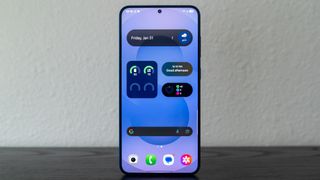
The Galaxy S25 Plus was launched alongside the base Galaxy S25 and Galaxy S25 Ultra on January 22, 2025, during an Unpacked event in San Jose, California. The phone was available to preorder that same day and goes on sale starting February 7.
The Galaxy S25 Plus is available at major retailers such as Amazon and Best Buy, as well as various carriers. The phone retails for $999 for the lowest configuration, which includes 12GB of RAM and 256GB of storage. The price goes up to $1119 for the 512GB variant.
The main Galaxy S25 Plus colors include Navy, Icy Blue, Mint, and Silver Shadow. Samsung-exclusive colors include Coralred, Blueblack, and Pinkgold.
Samsung Galaxy S25 Plus: Design & display
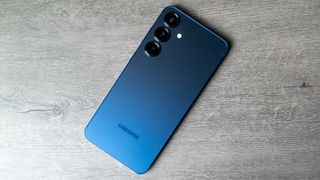
It’s easy to look at the Galaxy S25 Plus and mistake it for the Galaxy S24 Plus… or even the Galaxy S23 Plus. Samsung basically copy-pasted its design over the last several models, making very subtle tweaks with each subsequent release.
With the Galaxy S25 Plus, Samsung is going completely flat; a flat display, a flat rear glass panel, and a flat frame with rounded corners. It’s all very uniform and all very boring. Compare this to something like the OnePlus 13, and you’ll see a very stark difference in design, from the curved glass to the large protruding camera housing and even the rear glass design. The Galaxy S25 Plus would easily be overlooked in a lineup of Android phones.
The only redeeming quality of the Galaxy S25 Plus design is the new Navy colorway. I’ve gushed over this ever since it was launched, but it truly is Samsung’s best color option since the green Galaxy S22. It moves away from the pastels Samsung has been using as of late, and I couldn’t be happier to finally get a deeper hue. I’m especially happy that it’s blue since that’s my favorite color.
And it’s not just me who likes it; friends who have seen me using the phone have also commented on its color. That said, there is a Coralread colorway that’s exclusive to Samsung.com, which is really nice, too. Otherwise, the remaining Galaxy S25 Plus colors are rather forgettable.
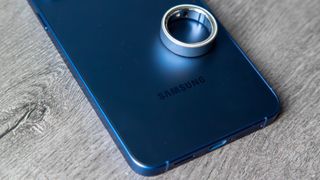
The Armor Aluminum frame is sandwiched between two Gorilla Glass Victus 2 panels, so the phone is sufficiently durable. However, if you own a Galaxy Ring or even an Oura Ring like I do, you may want to be careful with how you hold the phone. Within days of using the Galaxy S25 Plus, I noticed some scratches on the back finish, which is an unfortunate reminder to buy a case or maybe invest in a Dbrand skin if you wanna add more flair.
Another reason you’ll want a Galaxy S25 Plus case (and a screen protector while you’re at it) is that the sharp corners will do a number on your fingers, especially your pinky, if you hold phones as I do with one hand. For me, it’s the only downside to the flatter design.
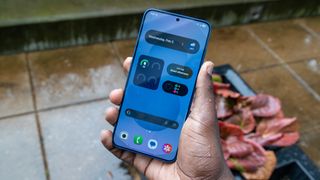
The display hasn’t changed much from the Galaxy S24 Plus. It’s slightly larger at 6.7 inches and plenty bright outdoors with very minimal bezels, but the resolution and refresh rate remain at QHD+ and 120Hz. Unfortunately, the phone inexplicably comes out of the box at FHD+, so you’ll have to change it in the settings when you set it up, just one of Samsung’s many confounding decisions with the phone. Otherwise, it’s a great display, and I don’t really have any complaints about the quality.
I will say that I wish Samsung would play around with higher refresh rates, especially for those who like to game on their phones. I like that my Razr Plus 2024, for example, comes with a 165Hz OLED panel. Is it overkill? Perhaps, especially for everyday tasks. But Samsung knows how to make great displays, and if you’re gonna have a powerful phone like this, the company has the opportunity to give some of the gaming phones a run for their money. But I digress.
The display on the Galaxy S25 Plus is great, but I wish Samsung would play around with higher refresh rates.
The Galaxy S25 Plus features IP68 water and dust resistance, so it’s well protected against the elements. I’m a little bummed not to see IP69 here, as it’s becoming an increasingly popular standard for water resistance on phones. Sure, it’s unlikely you’ll find your phone trapped in a dishwasher, but even cheap Android phones like the Moto G Power 2025 sport this rating.
Samsung Galaxy S25 Plus: Hardware & specs
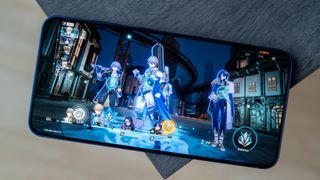
The Galaxy S25 Plus is powered by the latest and greatest chip that Qualcomm has to offer. The Snapdragon 8 Elite for Galaxy is a custom-made, souped-up version of the already powerful and AI-ready Snapdragon 8 Elite, and it does a lot of wonders for the Galaxy S25 Plus. Paired with 12GB of RAM, the phone does not show any signs of stuttering or slowing down, which is pretty much expected at this point.
What surprised me was when playing games like Honkai: Star Rail at max settings, the phone stayed quite cool. I noticed it gets slightly warm throughout my gameplay, but overall, the phone is cooler than most when playing this game, even in high or medium settings.
That said, the chipset is one of the few things about this phone that is new, with the overall specs closely matching the Galaxy S24 Plus.
| Category | Samsung Galaxy S25 Plus |
|---|---|
| Processor | Qualcomm Snapdragon 8 Elite for Galaxy |
| Display | 6.7-inch QHD+ AMOLED 2X, 120Hz Adaptive Refresh Rate |
| Memory | 12GB |
| Storage | 256GB, 512GB |
| Battery | 4,900mAh |
| Charging | Super Fast Charging 2.0 (45W), Fast Wireless Charging 2.0, Wireless PowerShare, Qi2 Ready |
| Operating System | One UI 7 (Android 15) |
| Rear cameras | 50MP Wide, 12MP Ultrawide, 10MP 3x Telephoto |
| Front camera | 12MP, wide hole-punch camera |
| Connectivity | 5G (sub6, mmW), Wi-Fi 7, UWB |
| Dimensions | 75.8mm wide x 158.4mm tall x 7.3mm thin |
| Weight | 190g |
| IP rating | IP68 |
| Colors | Icyblue, Navy, Mint, Silver Shadow |
Samsung Galaxy S25 Plus: Software
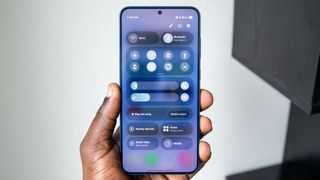
I can’t express this enough, but I love One UI 7. As a fan of One UI throughout the years, I admit the software wasn’t perfect, and there were some things I did not like. With One UI 7, which debuts on the Galaxy S25 series, Samsung has addressed a lot of my biggest problems with the software.
The new vertical scrolling app drawer is arguably the best new addition. Oddly, it isn’t enabled by default, and turning it on is a little confusing (change the setting to “Alphabetical” sorting), but once it’s enabled, it’s perfect. But even beyond that, I’ve had a positive experience with the changes to One UI 7, including the newly separated (and admittedly iPhone-esque) Quick Panel and notification settings.
Samsung adopted a much more bubbly icon style for many of its UI elements, including widgets. It reminds me of the Pixel UI, which I’m not a fan of, but I still prefer how Samsung utilizes space, retaining the smaller customizable quick toggles while implementing a new expandable panel, and stacking notifications over each other for the same app.
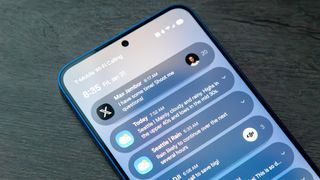
Overall, One UI 7 feels incredible to use. Swiping, scrolling, expanding, and closing through the software feels extremely buttery, almost like nothing I’ve ever experienced before on a phone. Just about every aspect of it feels incredibly optimized.
Samsung says the Galaxy S25 Plus will receive seven years of OS and security updates, which is becoming a new standard for the company’s flagship phones. It’ll be interesting to see just how well the software and chip hold out that far into the future, but the Snapdragon 8 Elite feels like it won’t slow down any time soon.
One UI 7 feels just as fast and fluid as ever, and Samsung will keep the Galaxy S25 Plus updated for seven years.
Unfortunately, Samsung is still doing some questionable things with how it handles its default out-of-the-box behaviors and settings. I already commented on the display betting set to FHD+ instead of QHD+, but I found myself having to change the lock screen notifications to the Cards style so I could actually see that I got notifications when the phone was locked, otherwise they go largely unnoticed. I also had to enable Notification Categories for better customization, an issue we had with One UI 6 that I thought would be addressed with One UI 7.
I also hate that Samsung defaults to waking the AI assistant when pressing and holding the power button. I just want my power button to be a power button. That said, I can see why Samsung would do this, and it all has to do with Samsung and Google’s big bet on AI.
Samsung Galaxy S25 Plus: Galaxy AI
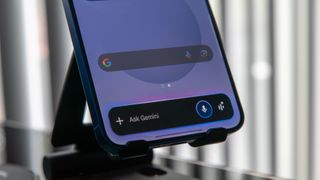
By default, the power button activates Gemini, which not only got a new look but also got some useful upgrades. Much of the focus has been on Gemini’s ability to work across different apps to get tasks done without much input from the user. In my experience, this worked fairly well, but results can be hit or miss depending on the complexity of what you’re asking. And while Gemini can now be used across Samsung apps, its ability is still somewhat limited for now.
Still, it works fairly well for what you’ll likely need or use it for. For instance, I asked Gemini about a YouTube video explaining the recent controversy over raw milk, then told it to make a list of the main takeaways. It saved a list to Google Keep with a title and bullet points, and it was fairly spot on, getting the bigger points while skipping over some of the minute details.

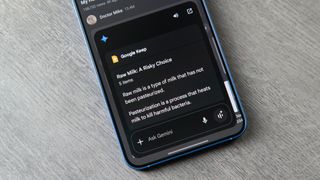
Gemini was also able to accurately read the details of my flight itinerary from my screen, then create a calendar event for me, create a list with the details, and text said details to my friend. That said, there are times when Gemini will run into walls because it can’t access certain apps, services, or data, and sometimes it will either skip a step or just say that it can’t complete the task for whatever reason.
At one point, I forgot to specify which video I was referring to and ended up getting Rickrolled by Gemini, which gave me a chuckle.
Yet, despite the shortcomings, it’s impressive to see just how far Gemini’s capabilities have come. It’s even more interesting to see how Samsung is essentially making this the highlight of its AI push on the Galaxy S25. Bixby is still around, but it’s put on the back burner and goes largely ignored… unless you absolutely want to use it.
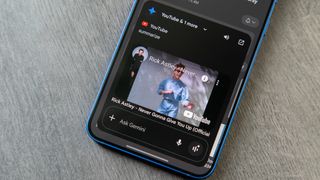
Samsung’s other features are actually quite fun to use, and some have received nice upgrades. Drawing Assist feels very much like Pixel Studio, providing a very stylistic hub where you can create images by drawing, using photos as a reference, or using text descriptions. You can also combine images or drawings with text to help you refine what you want the final result to be. The results are pretty good, although Samsung doesn’t afford as much freedom to generate certain things or characters as Google or Motorola (it ignored my attempts to generate R2-D2 or Sora from Kingdom Hearts).
Another Pixel-like feature is Audio Eraser, which does just as it says. You can take just about any video on your phone and adjust the levels of various audio sources, such as voices, music, and other noise. It works surprisingly well and will even identify a crowd over a main speaker so you can hear your subject better. I also like that you can edit videos you didn’t capture with the Galaxy S25.
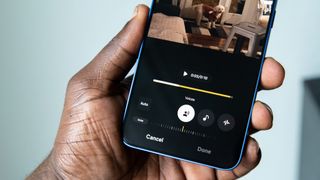
And while Circle to Search is very much present, AI Select acts as a cool alternative to extract images or text from your screen to accomplish various contextual tasks on the device. Circle a date or any text, and it’ll give you the option to add an event or open Writing Assist. Circle an image, and it’ll present you with options for Generative Edit, setting it as a wallpaper, or creating a GIF.
Oh, and Writing Assist features are thankfully no longer tied to Samsung’s awful keyboard and are accessible either with AI Select or by highlighting text and tapping the sparkle icon. Unfortunately, the incredibly useful Interpreter feature is still tied to Samsung Keyboard if you want to translate your texts when chatting in other languages.
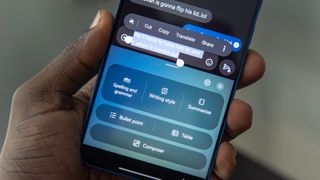
Mimicry is a form of flattery, and many of the features make the Galaxy S25 Plus feel like a Pixel in all the best ways. Although one new feature takes a cue from the iPhone, and another feature is surprisingly not already on a Pixel, even though it feels like it should be. I’m talking about the Now Bar and Bow Brief, respectively.
Now Bar is a Dynamic Island of sorts that sits at the bottom of the lock screen and presents contextual information, such as Google Maps directions, music controls, sports, and more. Because it sits at the bottom of the display, it’s very easy to reach to control your music or expand the bar to get a better look at live scores.
At the moment, it feels a bit limited, which may be due to a seeming lack of third-party support. However, with Live Updates in Android 16, I imagine it may not be too long before more apps jump on board. For now, it’s just nice to have, especially with Now Brief, which also appears on the bar throughout the day.
Now Brief gives you a snapshot of your day by presenting you with upcoming events, weather forecasts, news alerts, and more. If you use Samsung Health, you may find your Energy Score or activity ring here, although this has been pretty hit or miss for me. Now Brief updates at different times of the day to keep you updated in the morning, midday, afternoon, evening, and so on. You may also find photos you’ve taken earlier that day when you’re about to wind down.
This is another feature that doesn’t feel as useful as it should be, but I do like where Samsung is going with it. My briefings are often devoid of anything aside from weather and calendar events, and my health data doesn’t appear nearly as often as I would like. The experience just doesn’t feel very consistent, which is something I hope will change over time with more use.
Samsung Galaxy S25 Plus: Cameras
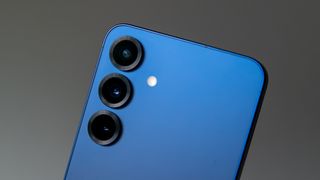
The camera hardware on the Galaxy S25 Plus is largely unchanged from its predecessor. That’s not necessarily a bad thing, but it’s not really a great thing, either. The 50MP primary camera produces very respectable images that feel crisp and vibrant, even in the dull grey of Seattle. The images don’t exactly blow me away, but they’re still good enough that I doubt many people would complain.
That goes for the ultrawide and telephoto cameras, too. Both are quite good and able to keep up with the main sensor without deviating too far in terms of color reproduction and contrast. That said, I do find that images from the Galaxy S25 Plus tend to feature more contrast than I would like, and low-light images can often appear surprisingly dark, even with Night Mode turned on.
I also find that the bokeh just doesn’t feel as natural as it does with the OnePlus 12, which is able to nicely keep the lantern and the branch it’s hanging on in focus while everything else is sufficiently blurred. The Galaxy S25 Plus does a decent job, but the effect just isn’t as dramatic, even though it manages to at least pull in more color.
The vibrant images taken with the Galaxy S25 Plus tend to feel much livelier than those from my Pixel 9, although the latter does a better job with low-light and nighttime images, pulling in more light while retaining plenty of detail. Samsung tends to stick to applying as much contrast as possible, so the colors on the Fuego sign are quite punchy, while the Pixel feels a bit washed out.
Unfortunately, you won’t find the same fun camera features on the Galaxy S25 Plus as you would on the Pixel. Something akin to Add Me would be a fun addition to the phone, and there’s also no Macro mode, which feels like a missed opportunity.
There is, however, 8K video recording at 30fps. Do we need it? No, but it’s another one of those nice-to-have features. The new Galaxy Log is another one, which lets the phone shoot Log video with a flatter color profile and more dynamic range, giving users more flexibility when editing afterward. Unfortunately, editing on the device itself is pretty limited to just applying Samsung’s color correction, but you can always bring the footage over to programs like Premiere Pro and edit there to add your own color corrections and color grading.
Again, it’s not for everyone, but it’s nice to have for the people who want it.
Samsung Galaxy S25 Plus: Battery & charging
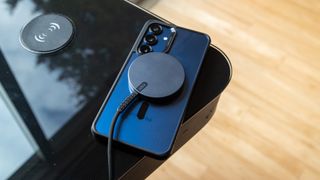
Despite having a more powerful chip and the same battery capacity as last year’s model, the Galaxy S25 Plus is pretty solid when it comes to battery life. The phone gets me through the day without issue, even between playing games like Pokémon Go and scrolling through Instagram Reels. I manage to average roughly seven or eight hours of screen-on time in my use, which is pretty nice.
Charging hasn’t been as generous. The phone supports 45W charging speeds, which is a pretty decent figure when compared to 25W on the base Galaxy S25, but I the phone still slows to a crawl when I’m actually charging it. Granted, I don’t have a Samsung charger, but it takes well over an hour for my 100W Anker charger to charge the Galaxy S25 Plus form 1% to full, despite the phone telling me it would only take roughly an hour to fill up.
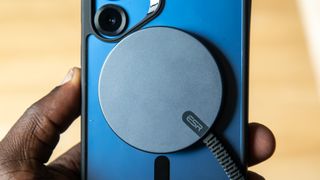
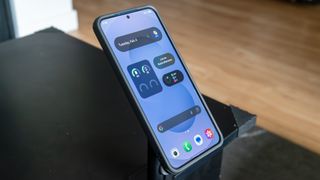
As for wireless charging, the Galaxy S25 Plus supports 15W speeds and officially supports Qi2 despite not having built-in magnets. This is important because it means you can use those Qi2/MagSafe chargers your iPhone friends have to top up the phone at full speed, granted you have a magnetic case for the phone.
In my experience, this has worked just fine, and it really makes me appreciate the convenience of MagSafe charging, even if speeds aren’t terribly fast. The only downside for some is that a case is necessary to make this work, but we’ll always recommend having a case than not.
Samsung Galaxy S25 Plus: Competition
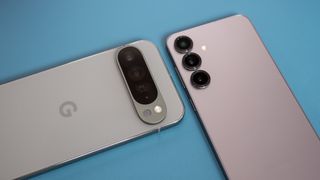
The Galaxy S25 is one of the first phones to launch in 2025, but it already has quite a number of phones to contend with if you’re looking for a new device to upgrade to.
The most obvious is the Google Pixel 9 Pro XL, which features a slightly larger 6.8-inch QHD+ display. Like the Galaxy S25 Plus, the Pixel sports a 50MP triple camera setup, great battery life, and 45W charging. There’s also plenty of AI on the Pixel, and Google will often release new features there before they reach other phones. The Pixel has more RAM to help with AI processing, although the Snapdragon 8 Elite on the Galaxy S25 Plus will beat out the Pixel’s Tensor G4 in terms of raw power and performance. Both phones cost $999.
The OnePlus 13 is also a worthy contender, sporting a larger curved display and a very unique design. The software may not be as robust with AI, and you get fewer software updates, but the camera is one of the best you’ll find on an Android phone, charging speeds are much faster, and the OnePlus 13 costs $100 less than the Galaxy S25 Plus.
Still, Samsung has a closer relationship with Google, so many new features will reach the Galaxy before they come to OnePlus, and hardware support for Samsung is a bit more robust, especially in the States, where Samsung dominates. And despite being cheaper, the OnePlus is only available unlocked, whereas the Galaxy S25 Plus can be purchased through carriers if you don’t want to pay outright.
Samsung Galaxy S25 Plus: Should you buy it?
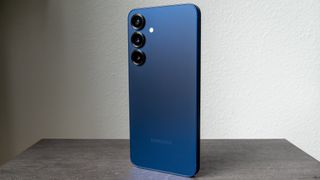
You should buy this if…
- You want a powerful smartphone with extensive software support.
- You want the latest AI features but don’t want a Pixel smartphone.
- You’re a fan of One UI and/or the Galaxy ecosystem.
You shouldn’t buy this if…
- You own a Galaxy S24 Plus or maybe even a Galaxy S23 Plus.
- You want the best Android camera experience.
- You want super-fast charging speeds.
The Galaxy S25 Plus feels like a Pixel phone in all the best ways. Not only is it chock-full of AI, but the software finally feels fluid and cohesive. The AI doesn’t overwhelm the experience nor try to get in the way, mostly sitting there waiting for you to interact with it. In a time when AI is everywhere, this is something people may appreciate about Samsung’s latest flagships.
There’s a lot to like about the Galaxy S25 Plus, from the large, sharp display to the incredible performance and the efficient use of power. As the middle child of the Galaxy S25 series, the Plus no longer feels like the “awkward” one.
That said, there’s something to be said about the lack of hardware upgrades. Aside from the new Snapdragon chipset, the phone features the same amount of RAM, the same cameras, the same battery capacity and charging specs speeds, and a lot more of the same. Sure, Qi2 is here, but even that is somewhat half-assed.
The Galaxy S25 Plus just isn’t that exciting of a phone, which is exemplified by its rather dull design. It’s nice that Samsung kept the price the same, but it would also be nice if AI and a new chip were the only upgrades.
It sort of echoes much of what I’ve been hearing about the new NVIDIA RTX 50-series GPUs, which also feature seemingly significant performance upgrades while focusing heavily on AI enhancements to improve gameplay. If you have the previous model, and perhaps even the model before that, no matter how good it is, the newest thing just doesn’t feel that exciting.
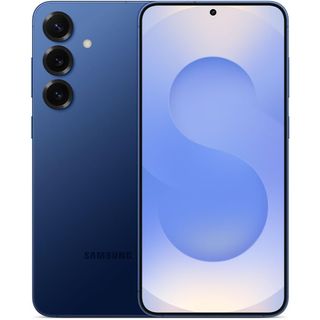
Samsung’s Pixel XL
The Galaxy S25 Plus might be one of the most souped-up AI phones, kicking off 2025 with a solid package thanks to the Snapdragon 8 Elite and a large QHD+ display. If you can go without an S Pen on the Ultra, then this is the large-screened Galaxy phone you should buy.

